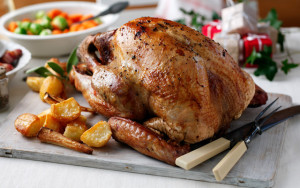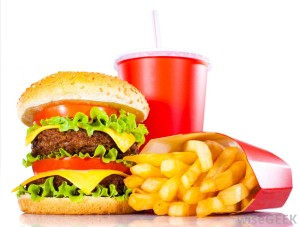
The first of a series of talks on the first Monday of each month at 7pm (after running club). All runners/massage and PT clients are very welcome to attend. The talks are free and will address various aspects of nutrition and training and should appeal to a wide audience. They are informal and friendly.
On Monday 7th August the title of the talk is “Dietary Fat – Friend or Foe”. Over the last 40-50 years the government advice has been to encourage a low fat calorie controlled diet yet the incidence of obesity and Type 2 diabetes is higher than ever. Are we lazy gluttons? Or is the advice seriously flawed? This talk looks at the types of fat present in food, the evidence for and against eating fats on health grounds and the role of the food industry in adding fats to processed foods. The aim is to present more information on dietary fat than is generally available, based on scientific studies from the reading list, to assist individuals in making their own personal dietary choices.

Here is a summary of the notes for the talk:
DIETARY FAT – Friend or Foe?
Range of food items
What is understood to be current NHS advice re fat
Categorisation of food into macronutrients
Categorisation of fat as saturated/mono/unsaturated
What are these types of fat (chemical structure) and in which foods are they found
Saturated
- Palmitic vs stearic acid
Unsaturated
- Monounsaturated
- Polyunsaturated
- Omega 3s and omega 6s
- Trans-fats (and cis-fats)
Historical approach to hydrogenated fats
What about cholesterol
Studies on fat and CHD
Effect of different fats on lipid profiles and CHD
Future of fat in processed foods (banning of trans-fats/substitution with palm oil)
Some points to ponder:
In 1984, the US National Heart, Lung and Blood Institute launched a massive health campaign. They undertook a decade long trial to test the idea that eating less saturated fat would curb heart disease. Not a single heart attack was prevented. After 10 years and $115m they gave up.
In the early 1990s, the National Institute of Health instigated the Women’s Health Initiative costing around a billion dollars. Amongst the questions asked was whether a low fat diet prevented heart disease or cancer. Fifty thousand women were divided into two groups, a low fat group and an “eat what you like” group. After six years, the “low fat” group had cut both their saturated fat and total fat consumption by a quarter, slightly lowered their total and LDL cholesterol to just below that of the “eat what you like” group, and had lost only 2lbs. There was no difference in their incidence of heart disease, stroke, breast cancer or colon cancer. In fact, there was no observable benefit at all of a low fat diet.
In 2007, Stanford University conducted an “A TO Z Weight Loss Study”. Subjects were instructed to eat as much fat and protein as they wanted but avoid carbohydrates i.e a high fat, high saturated fat diet. They were compared with those on a low fat, low saturated fat restricted calorie diet. Those who ate mostly fat and protein
- Lost more weight
- HDL went up
- LDL went up
- Trigycerides went down
- Blood pressure went down
- Total cholesterol stayed the same
- Their risk of a heart attack decreased significantly
In 2001, Harvard researchers Drs Frank Hu and Walter Willett said “It is now increasingly recognised that the low fat campaign has been based on little scientific evidence and may have caused unintended health consequences”.
In September 2009, the World Heath Organisation published a reassessment of the data on dietary fat and heart disease which stated “The available evidence from observational studies and randomised controlled trials is unsatisfactory and unreliable to make a judgement about and substantiate the effects of dietary fat on the risk of coronary heart disease”.
Vegetable oils are highly processed. Take palm oil for example. First is fractionation, with crystallisation and separation processes to obtain solid and liquid fractions. Then melting and degumming removes impurities. Then the oil is filtered and bleached to produce “refined, bleached and deodorised palm oil” or RBDPO, the basic palm oil sold in the world’s commodity markets. Food companies then fractionate RBDPO further to produce palm olein, used for cooking and other food products.
In 1990, Dutch researchers found that a 2% increase in the intake of trans- fats results in a 23% increase in the risk of coronary heart disease. By 2000, Denmark, Iceland and Switzerland banned trans-fats for human consumption.
The USDA (United States Drug Administration) stated in 2016 that “Cholesterol is not a nutrient of concern for over-consumption”. In other words, you can eat as much cholesterol as you like and it is not harmful.
A 2006 study supported by the National Institute of Health and the USDA concluded that palm oil is not a safe substitute for partially hydrogenated (trans) fats in the food industry, because palm oil results in adverse changes in the blood concentrations of LDL cholesterol and apolipoprotein B just as trans-fat does.
Before 2000, studies on saturated fats included trans-fats. The Nurses Health Study followed 80,082 nurses over 14 years. After removing the effect of trans-fats, the study concluded that “total fat intake was not significantly related to the risk of coronary disease” and that dietary cholesterol was also safe.
An analysis of 21 studies in 2010 in the American Journal of Clinical Nutrition covering 347,747 patients found “no significant evidence for concluding that dietary fat is associated with an increased risk of coronary heart disease”.
Twenty year follow up data from the Framingham heart study revealed that margarine was associated with more heart attacks whereas butter was associated with fewer heart attacks. Those eating the most saturated fat had the least strokes whilst polyunsaturated fats (vegetable oils) were not beneficial.
The National Cholesterol Education Program states “the percentage of total fat in the diet, independent of caloric intake, has not been documented to be related to body weight”. In other words, eating fat does not make you fat.
Harvard researcher Dr Willett concludes “The emphasis on total fat reduction has been a serious distraction in efforts to control obesity and improve health in general”.
Reading List:
- http://www.nhs.uk/Livewell/Goodfood/Pages/the-eatwell-guide.aspx
- “The Obesity Code” (2016) by Dr Jason Fung
- “Nutrition and Physical Degeneration” (1939) by Weston A Price DDS with many reprints
- “Pure, White and Deadly: The Problem of Sugar” (1972) by Professor John Yudkin
- “The Paleo Diet” (2011) by Dr Loren Cordain
- “The Paleo Diet for Athletes” (2012) by Dr Loren Cordain and Joe Friel
- “The Case Against Sugar” (2017) by Gary Taubes
- “Fat Chance: The Hidden Truth About Sugar, Obesity and Disease” (2014) by Dr Robert Lustig
- “Human Evolution, Diet and Health-The Case for Paleolithic Nutrition” (2008) Mark Hines
- “It is time to bust the myth of physical inactivity and obesity: you cannot outrun a bad diet” by Malhotra/Noakes/Phinney British Journal of Sports Medicine 23/4/2015
- “The Great Cholesterol Myth” (2012) Bowden/Sinatra
- “The Primal Blueprint” by Mark Sisson (2012)
- “Why We Get Fat and What To Do About It” by Gary Taubes (2012)
- “The Great Cholesterol Con” by Dr Malcolm Kendrick (2008)
- “Rebuilding the Food Pyramid” by WC Willett and MJ Stampfer (Harvard School of Public Health) Scientific American 288 no 1 (Jan 2003) 64-71